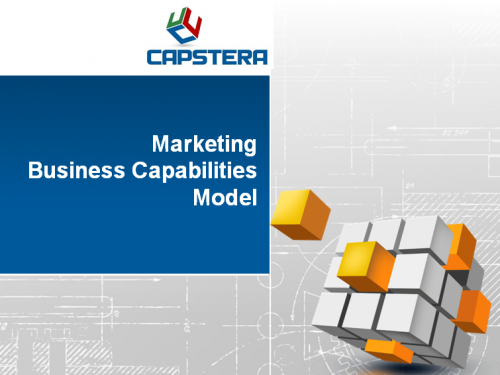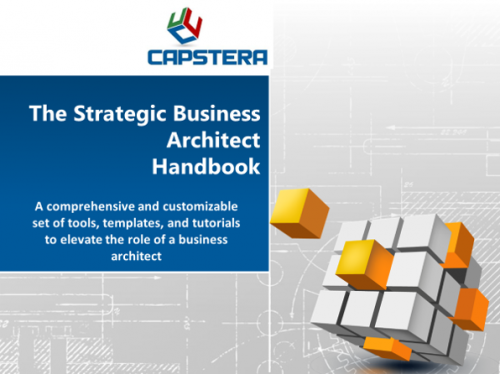Oil and Gas Business Capabilities Map
Price range: U.S. $999 through U.S. $2,999
The Oil and Gas Business Capabilities Map is a customizable, comprehensive, and in-depth set of business capabilities that capture the essence of what an oil and gas company does. It will help companies gain a holistic perspective of their business at a foundational level and provide a business blueprint for many valuable purposes.
The Oil and Gas business capabilities map comprises about 375 capabilities across three levels.
Oil and Gas Business Capabilities Map Deliverables:
The Oil and Gas business capabilities model comprises ~375 capabilities across three levels and includes the following editable artifacts:
- An Excel spreadsheet with the grouping of capabilities.
- A PowerPoint format with the top three levels presented in a nested visualization.
- A Word document with capabilities in a multilevel list format.
- Capability Definitions (at Level 3)
- Capability KPIs (Key Performance Indicators) (at Level 2)
(Note: As the Oil and Gas business capabilities map is a digital deliverable, we do not accept returns or issue refunds. So, please read the product description and the terms carefully before purchasing.)
Watch an Intro Video of the Oil and Gas Capabilities Map
The Oil and Gas business capabilities map is a set of multilevel and granular business capabilities primarily focusing on the core industry-specific value chain but also decomposes the horizontal shared services.
A capabilities model is a must-have tool for business architects, enterprise architects, business and technology leaders, and project teams to fathom the nuances of the industry’s core, context, and commodity capabilities.
The Strategic Imperative for Oil and Gas Industry Transformation:
The oil and gas industry is facing several challenges that are driving transformation. These include:
- Sustainability concerns like climate change and carbon emissions pressure companies to reduce their environmental impact.
- Government regulations are becoming more stringent, requiring companies to comply with new emissions standards and other environmental laws.
- New technologies, such as renewable energy and energy efficiency, are making it possible to produce and use energy more sustainably.
- Changing customer preferences leads to a demand for cleaner, more sustainable energy sources.
These forces are driving oil and gas companies to transform their businesses to remain competitive and meet the needs of a changing market. Some of the ways that companies are transforming include:
- Investing in renewable energy. Many oil and gas companies are investing in renewable energy sources, such as solar and wind power, to reduce their environmental impact and diversify their energy portfolio.
- Developing new technologies. Companies are also investing in new technologies, such as carbon capture and storage, that can help them reduce their emissions.
- Changing their business models. Some companies are changing their business models to focus on providing energy services, such as energy efficiency and demand management, rather than just selling oil and gas.
The oil and gas industry is in the midst of a significant transformation. The forces driving this transformation are complex and challenging, but they also present opportunities for companies willing to adapt.
Business Capabilities are a Cornerstone for Transformation
For an Oil and Gas company to transform successfully, it is essential to establish a structurally strong foundation to support change and innovation over time. This is where business architecture and business capabilities come into play. Business architecture is creating a structured model, including an abstraction of its operations, functions, systems, and resources. This model can help enterprises understand how their business operates, identify inefficiencies, and develop a plan to optimize and streamline operations. In addition, by creating a clear picture of their business architecture, companies can better understand how different business units and functions interact and how changes in one business area can impact other areas.
Business capabilities encapsulate and abstract the functions, skills, and resources a company needs to execute its business strategy successfully. By defining and organizing their business capabilities, companies can identify gaps and redundancies and develop a roadmap to address them. This helps ensure the firm has the necessary resources to execute its strategy and drive innovation over time.
Business architecture and capabilities provide firms with a framework to assess and optimize their operations, reduce costs, and drive innovation. By taking a structured approach to transformation, enterprises can build a foundation capable of supporting ongoing change and adaptation and position themselves for success in a rapidly evolving industry.
(NOTE: The current product provides a comprehensive business capability model. It does not include other business architecture artifacts.)
How to Use the Oil and Gas Industry Business Capabilities Map?
A business capabilities map is a fundamental and foundational deliverable in the business architecture continuum. For example, the Oil and Gas capabilities model encapsulates end-to-end aspects of the business with a detailed, multilevel capabilities list.
There are several benefits from business capabilities, including, among others:
- Foster alignment between business and IT using capabilities as an everyday language.
- Capabilities are a structurally sound and internally coherent abstraction of business functions.
- A capability-based roadmap eliminates redundancy and replication and focuses on capability evolution.
- Juxtaposing capabilities and systems/applications provide a footprint analysis and can lead to better application portfolio rationalization decisions.
The Oil and Gas producer capabilities map decomposes components up to three levels. Created by business architects and industry domain experts, the capabilities list is detailed, in-depth, and conforms to the construct of MECE (mutually exclusive and collectively exhaustive).
Who should use the Oil and Gas Capabilities Map?
The Oil and Gas producer business capabilities matrix is a generic model; hence, it is a starting point, not the final product. (Please note that a generic map covering multiple areas will not be specific to your specific company or business model; that is where our professional services can help customize and detail the capability model. Or you can modify and tailor it to your needs internally.) The primary users encompass:
- Business architects and enterprise architects.
- Leaders focused on business transformation.
- Product and program managers enabling capabilities.
The oil and gas industry is diverse, vast, and complex. Therefore, the following subsectors can customize the core oil and gas business capabilities matrix to their needs.
The oil and gas industry is divided into three main subsectors: upstream, midstream, and downstream.
- Upstream refers to the exploration and production of oil and gas. This includes finding and developing oil and gas reserves, drilling wells, and producing oil and gas.
- Midstream refers to oil and gas transportation, storage, and processing. This includes building and operating pipelines, storage tanks, and refineries.
- Downstream refers to the marketing and distribution of oil and gas products. This includes selling consumers gasoline, diesel, jet, and natural gas.
In addition to these three main subsectors, several other subsectors support the oil and gas industry, such as:
- Oilfield services companies provide various services to oil and gas companies, such as drilling, completion, and production services.
- Oilfield equipment companies manufacture and sell equipment used in the oil and gas industry, such as drilling rigs, wellheads, and pipelines.
- Oilfield technology companies develop and sell technologies used in the oil and gas industry, such as hydraulic fracturing and horizontal drilling.
The oil and gas industry is a complex and diverse industry that plays a vital role in the global economy. The subsectors of the oil and gas industry work together to provide the world with the oil and gas products that it needs.
Why Purchase a Business Capabilities Map?
Defining business capabilities from a blank slate takes time and effort and delays time to value. Instead, a pre-built and customizable business capability map helps provide 60-80% of capabilities allowing internal teams to focus on what is missing or unique to their companies.
And the cost is less than an inexpensive team dinner or the loaded cost of 4-5 team members brainstorming for an hour.
And far less than the deliverables consulting firms produce at over $100,000 or more, and compared to that number, the cost of our capabilities models is a fraction (a rounding error.)
Even if you already have a capability map, you could use our version to compare, validate, and potentially include missing capabilities.
A Note About the Artifacts:
- Business Capabilities Matrix: A functional area occupies one box in many business capability maps. Some may wonder why we decomposed the capabilities into 100X or more capabilities. We humbly submit that one box or entry in a one-page diagram is Wall Art, not an implementation tool. Decomposing capabilities into a nested list of granular items will help understand a capability’s depth, breadth, scope, and importance. It is also possible that some capabilities in our matrix may not be relevant to you. Similarly, we may have captured and documented some relevant and essential capabilities of your firm.
- Capability Definitions: We include capability definitions at Level 3. Please feel free to modify it to your company’s needs.
- Capability KPIs (Key Performance Indicators): We added a few KPIs for capabilities (mostly at Level 2) to get you started. You may not measure these KPIs in your company and have an entirely different set of metrics. Again, use them as a springboard, and not debate the applicability to your firm.
Provisos:
- We cannot accept refunds or returns as the products are digital deliverables.
- Please realize that a generic capability model may or may not be fully applicable in some circumstances.
- We do not offer any implied or explicit warranties, and it is sold on an as-is basis.
- The sale does not include customization or implementation help.
- Please review our standard Ecommerce Store Terms and Conditions.
Need Customization Help?
Oil and Gas Business Capabilities Map
Price range: U.S. $999 through U.S. $2,999





